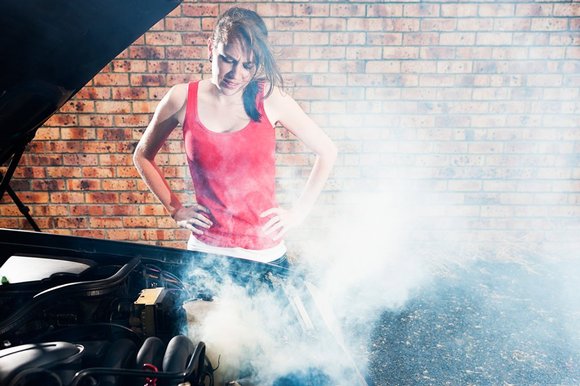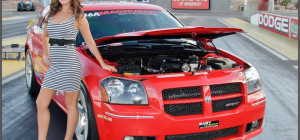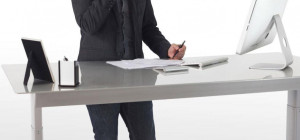Overheating cars can be a nightmare. Most of you know the feeling when the temperature rises up, especially while sitting at a stop light and hoping to move on time, so that the engine gets a little cooled. Can anyone get rid of the fear of the engine catching fire or shutting down completely owing to heat?
But a simple question is sure to pop up. Why is this overheating of the car occurring?
There can be several reasons behind these. And if you want to avoid this, you can go for multiple ways too.
Overheating can be caused owing to various reasons. The key here is to figure out the reasons behind it. Otherwise the process of reaching a solution is going to be a difficult one. In some cases, you can solve the problem by yourself and in others, you may need some professional help.
- Low Coolant
You get a ‘maintenance needed' warning light or a symbol lighting up. You will not get anything if the coolant is too low. This is the very first thing you need to check when the engine overheats. Have a look at the coolant level to determine if you need to add some more. Ample coolant is quite vital, especially when you are moving at a high speed.
- Coolant Fan Fails to Work
This is caused owing to several problems, but is not very hard to spot. As soon as you see the temperature gauge coming up, just have a look at the fan. In most vehicles, it is located near the radiator. If it is sluggish or is not working at all, you are in trouble. There can be two different reasons behind this:
- Non-functioning Electric Fan
Just turn on the air conditioning unit to see whether the fan turns on. At times, the air conditioning unit will force it into action. You can also check out on things by disconnecting the wiring harness from the radiator fan switch. Consult the manual if you are not certain. Insert jumper wire and see whether the fan turns on. The fan motor may burn out and you may need a new one.
- Radiator Switch Not Working
As soon as your car reaches a given temperature, the fan switches itself on. In case the switch is not working, the message never gets transferred. You can test the switch by following the same steps discussed above. If the fan starts working when the jumper wire is attached, you need a new radiator switch.
- Broken Fan Belt
If the fan belt is broken, your car gets overheated faster. Broken fan belts also indicate improper functioning of other parts of the engine. Fan belts are quite common on the older cars. The good news here is that it is cheap and quite easy to fix too. You can tell whether the fan belt is broken just by looking at your car engine.
- Thermostat Remaining Closed
When the car engine begins heating up, the thermostat aids in keeping a track of the temperature. As soon as the temperature reaches a given point, the thermostat will open, thereby allowing more coolant to pass through it. This aids in cooling down the engine. If it does not open, the car presumes that it is idling and thus, uses minimal coolant. The result? Overheated car, especially if you are speeding on a highway.
- Leaking Coolant
If you see that your car is getting overheated regardless of the things you do, look underneath your car when you stop. If you find a great deal of liquid, the coolant is probably leaking. You can confirm this by checking out on the coolant level. If they are low enough even if you have filled it recently, visit a service station and get the car repaired to solve the problem soon.
So What to Do If Your Car Gets Overheated?
Here are a few things you can try out to get the best results in case the car is getting overheated.
- Pull Over
Pull over and allow the engine to cool down. If you see steam emanating from the hood, stop. You can keep an eye on the temperature gauge to stop steam escape.
- Open Hood to Allow the Heat to Disperse
Don't keep heat bundled up. Open it. Remember that some cars have safety latch close to the radiator cap. So, there is a risk of getting burned if steam comes out of the radiator cap.
- Check Coolant Reservoir and Fill It If Necessary
Most modern cars include a reservoir of coolant connected to the radiator. This helps to see whether the coolant is low. Most enjoy marks specifying the right coolant level.
- Determine if it is Safe to Drive or Need Help
If your car is just low on coolant, it is safe to drive after refilling it.
If you have to drive your car, perform the following tasks.
- Turn Off the Air Conditioner
If your car has an air conditioning unit, turn it off. Air conditioners put a load on the engine that is better to avoid.
- Keep an Eye on the Light and the Temperature Gauge
Pull over and turn the engine off if necessary. If your car gets overheated too much, the engine may get ruined.
- Be Steady
Move steadily at a slow pace. Accelerating fast and applying the brakes will increase the load on the engine, making it work overtime.
Don't get tensed if the engine of your car gets overheated. You can take a few steps to solve it. But if you feel that you are not being able to tackle the situation, go for professional help.
Contributed by: http://www.plates4less.co.uk/








